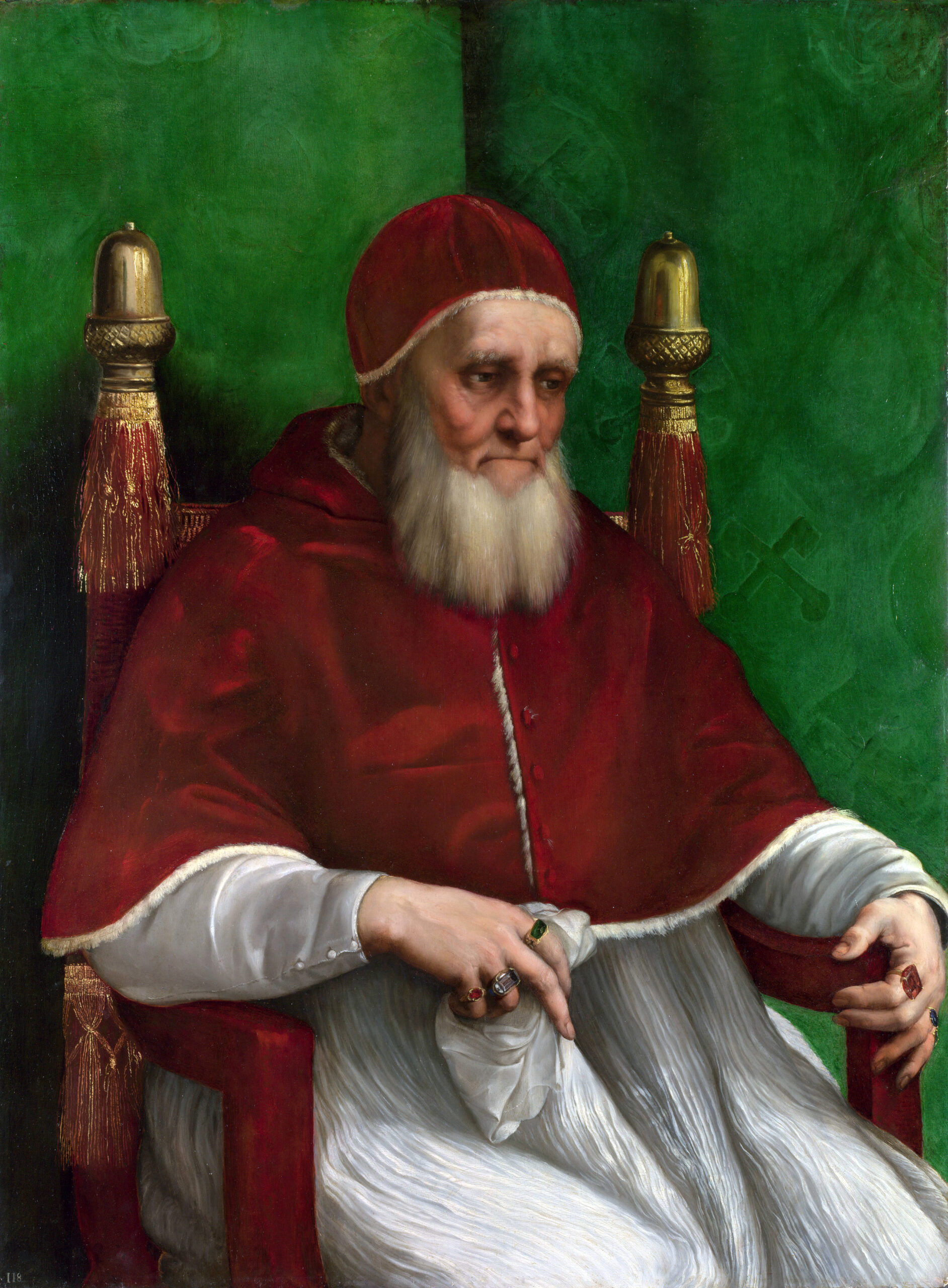Pope Julius II
Pope Julius II was born Giuliano della Rovere on December 5, 1443. During his reign, he earned the nicknames “The Fearsome Pope” and “The Warrior Pope” as head of the Catholic Church and ruler of the Papal States. His papacy was marked by an active foreign policy, ambitious building projects as well as patronage to the arts. He commissioned the destruction and rebuilding of St. Peter’s Basilica and Michelangelo’s decoration of the ceiling of the Sistine Chapel. In addition to an active military policy, he personally led troops into battle on at least two occasions, the first in 1506 and the second in 1510.
His uncle was Pope Sixtus IV and upon his ascension to the Throne of Peter, Giuliano della Rovere was immediately promoted to the cardinalate, taking the title formerly held by his uncle. He was sent to France in 1480 and gained considerable political experience and influence during his four years in the country. It was also during this time that he fathered his first child, a daughter born in 1483. He won election as pope unanimously, through a combination of bribes, promises to Cesare Borgia and threats to any opponents. He immediately went back on his word to the powerful Borgia family declaring “I will not live in the same rooms as the Borgias lived. Alexander VI desecrated the Holy Church as none before. He usurped the papal power by the devil’s aid and I forbid under the pain of excommunication anyone to speak or think of Borgia again…All the tombs of the Borgias must be opened and their bodies sent back to where they belong—to Spain.”
Quite an indictment. Despite the clergy’s sacred oath of celibacy, Julius reportedly had several mistresses and besides his illegitimate daughter, sources indicate that he had two other daughters who died during childhood. In 1511, a council brought charges of lewd sexual acts against him, alleging that he was “a sodomite covered with shameful ulcers.” This is not the best way to be remembered in history. Although he was a devotee of the arts and collected ancient sculptures, he was apparently not a believer in the adage – good art takes time. Julius forced Michelangelo to complete the Sistine Chapel faster than the master had wished (it was painful, uncomfortable work). Perhaps in spite, Michelangelo never got around to finishing Julius’ tomb after the pope had died. Julius II died of fever in February 1513. Commissioned in 1505, the “Tomb of Julius” by Michelangelo is located in San Pietro in Vincoli in Rome, while Julius is in fact buried in the Vatican. The tomb Michelangelo began was not completed until 33 years after the pontiff’s death and although magnificent, it was completed on a smaller scale than originally intended. The remains of Julius, along with those of his uncle, Pope Sixtus IV, were later desecrated during the Sack of Rome in 1527. Today, the remains of both lie in the floor of St. Peter’s Basilica, in front of the monument to Pope Clement X. A simple marble tombstone marks the site.
Julius features prominently in ‘The Prince’ by Niccolò Machiavelli, both as an enemy of leading protagonist Cesare Borgia and as an example of an ecclesiastical prince. Unlike the portrayal of many popes in the book, Julius is viewed as a strong individual, who consolidated authority while wisely following Fortuna – the imposing of one’s will to bear good fortune. On the other hand, his military and political tactics created dissent among church leaders, adding fuel to the fire of the religious revolt that reached its zenith under his successor, Leo X.





